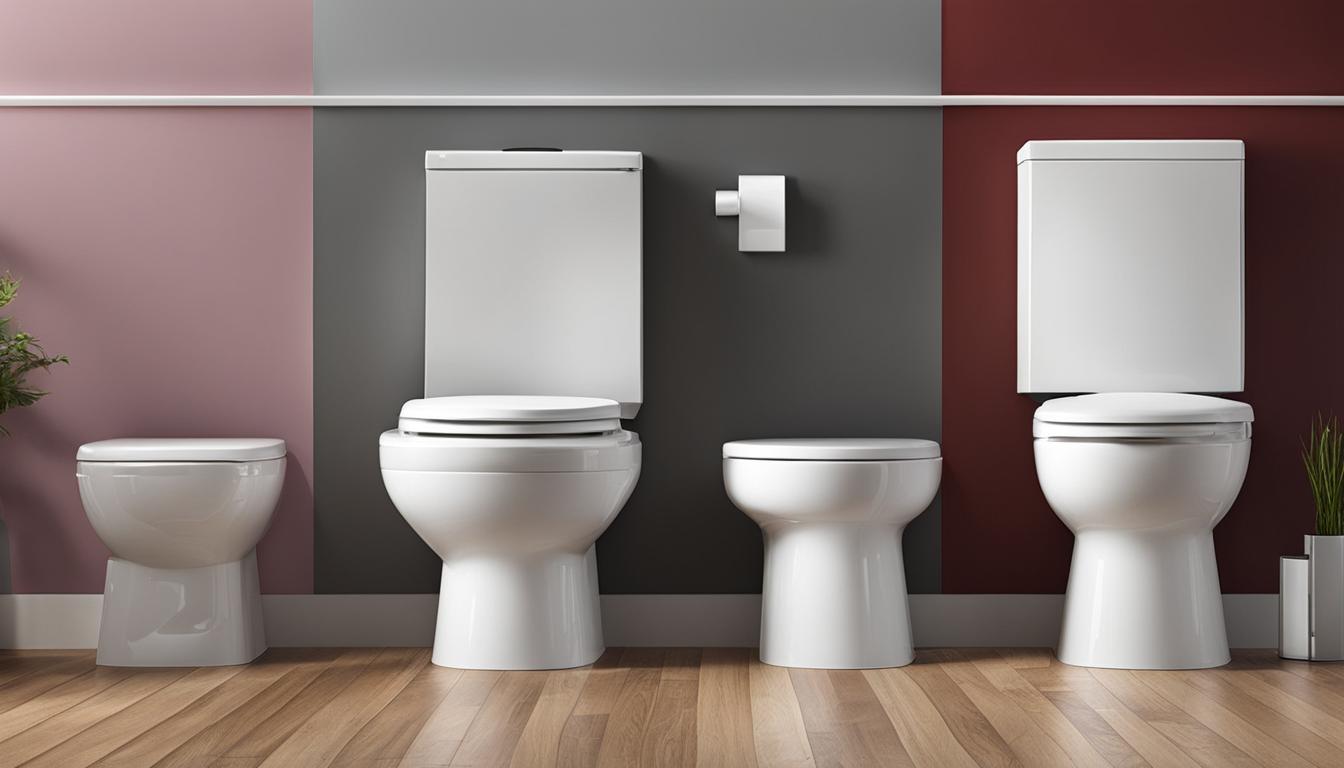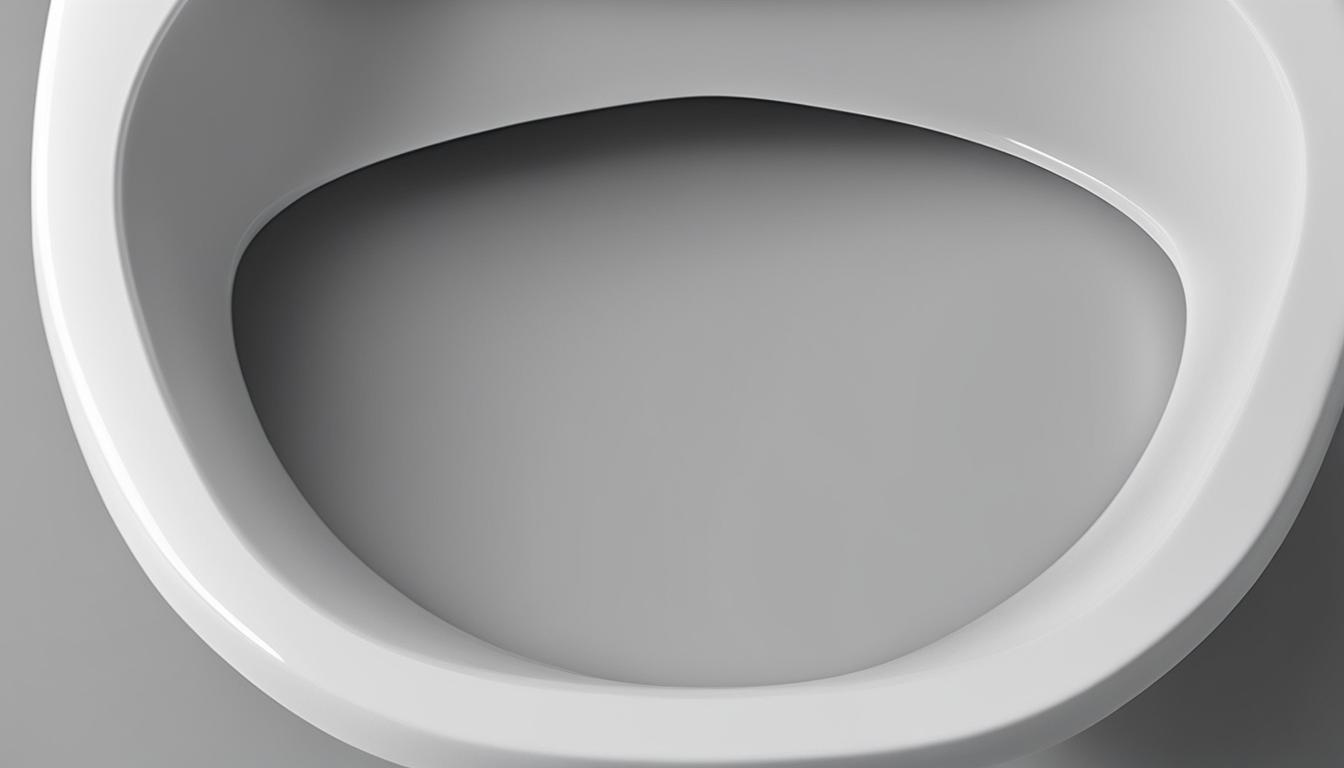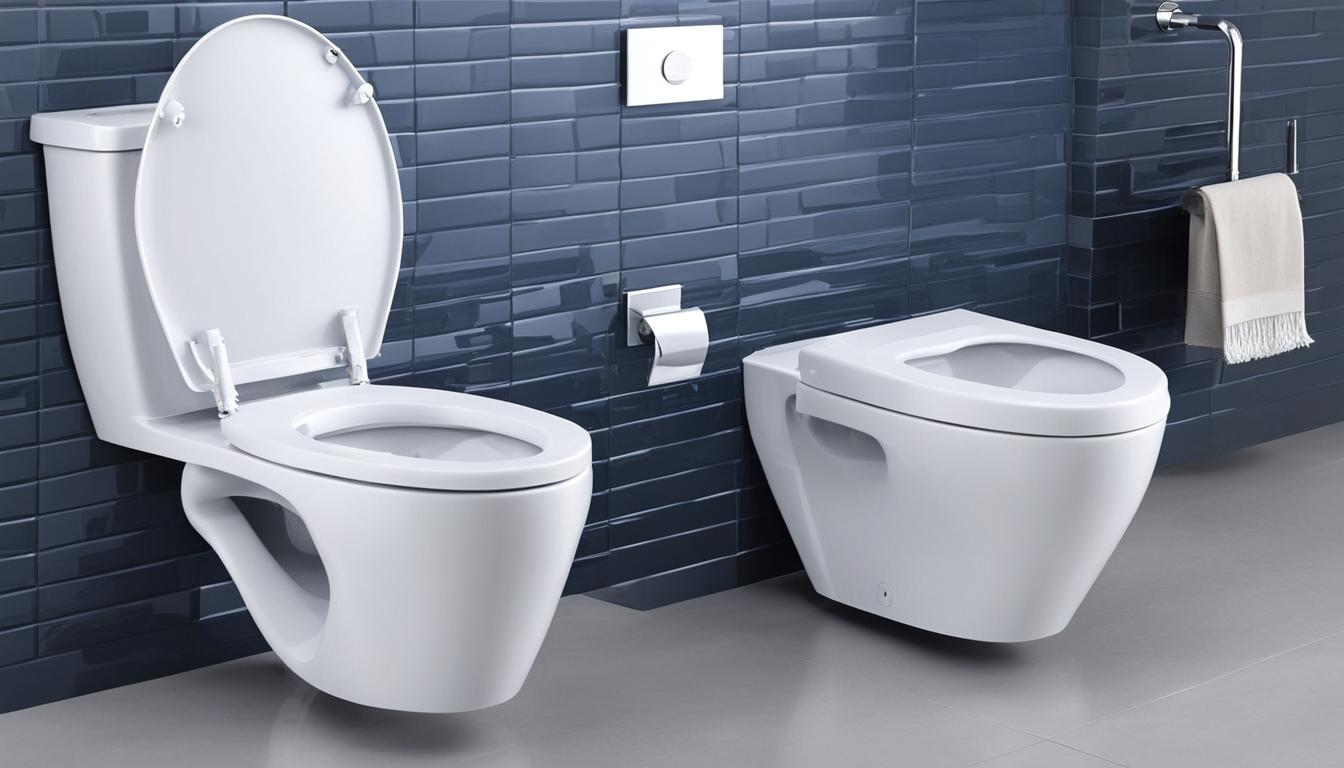Discover the ultimate guide to selecting the best toilet bowls for top-notch bathroom design. This guide covers various toilet types and their designs, ensuring you make an informed decision for your bathroom renovation.
Toilet Basics
What Are Toilets Made Of and How Do They Work?
Toilets are a must-have in every bathroom. They are usually made from materials like porcelain, vitreous china, and sometimes stainless steel. Porcelain is super popular because it’s strong and easy to clean. Knowing what toilets are made of helps you understand how long they last and how to take care of them.
Toilets use different flushing systems. The two main types are gravity flush and pressure-assisted flush.
- Gravity Flush Mechanism: This is the most common kind. When you push the flush lever, water flows down from the tank into the bowl thanks to gravity. It clears out waste pretty well.
- Pressure-Assisted Mechanism: This one uses air pressure to push water into the bowl with more force. It’s great for places like restaurants where lots of people use the toilet.
Knowing these mechanisms can help you choose the right toilet and fix simple problems if they come up, like clogs or weak flushing.
Understanding Toilet Types and Their Importance in Bathroom Design
Picking the right type of toilet is super important for both how well it works and how it looks in your bathroom. Different toilets meet different needs based on things like saving water or fitting family lifestyles.
For example, low-flow toilets save water but still flush effectively, making them a hit with eco-friendly homeowners. Families with kids might want comfort height or elongated bowls since they’re easier for little ones to use.
Choosing the right toilet isn’t just about looks; it can really affect how your bathroom works overall. A good choice can make using the bathroom more comfortable while also saving on water bills.
Things to Consider Before Choosing a Toilet
Before you buy a new toilet, there are some key things to think about:
- Space Considerations: Make sure to measure your bathroom so that your new toilet fits nicely without blocking any pathways.
- Plumbing Requirements: Check if your current plumbing can handle the new toilet’s setup—this includes looking at trapway size and where the outlet is positioned.
- Budget and Installation Costs: Know what you can spend not just on buying the toilet but also on getting it installed properly. Finding out average installation costs can help you budget better.
Thinking through these points will help you pick a toilet that fits your needs without breaking the bank.
Important Design Choices
Design matters when you’re picking out a toilet because it needs to work well and look good too!
Aesthetic choices include colors and styles that match your bathroom’s vibe—modern designs might have sleek lines while traditional ones could be more detailed.
Comfort is another big deal; standard dimensions play an important role here:
- Toilet Height Considerations: Chair height toilets are great for people who have trouble sitting down or getting up.
- Bowl Shape Options: Elongated bowls give more room compared to round ones, which makes them comfier for users.
Making smart design choices ensures that your chosen toilet not only works well but also adds style to your space.
Popular Services for Homeowners and Landlords
Many homeowners look for professional help when dealing with toilets:
- Plumbing Services: Regular check-ups can stop blockages or leaks before they become big problems.
- Installation Services: Getting pros to install your new toilet means everything will meet local plumbing codes, which helps avoid issues later on.
Investing in good services saves time and guarantees quality work, which is key for being happy with your fixtures over time.
Gravity-Flush Toilet
Overview of Gravity- Flush Toilets
Gravity-flush toilets are super common in homes today. They work on a simple idea: when you push the handle, water from the tank flows down into the bowl because of gravity. This creates a siphoning effect that helps get rid of waste effectively. Knowing how these toilets function can help homeowners see their efficiency and reliability.
Some common problems with gravity-flush toilets include clogs and weak flushes. Clogs often happen when too much toilet paper or other stuff gets flushed. Weak flushes can occur if the water level in the tank is low or if there’s mineral buildup in the toilet parts. Regular maintenance, like checking for leaks and making sure water levels are right, can help prevent these issues. Homeowners should look out for signs that they need service, such as frequent blockages or slow drainage.
Advantages of Gravity- Flush Toilets for Homeowners
One big plus of gravity-flush toilets is their cost-effectiveness. They usually cost less to buy and install compared to other types like pressure-assisted models. Plus, they don’t need much maintenance since there are fewer mechanical parts involved.
Another benefit is water efficiency. Many modern gravity-flush toilets use low-flow technology to save water without losing performance. This not only helps the environment but also lowers monthly utility bills, making them great for budget-conscious homeowners.
Pressure-Assisted Toilet
Pressure-assisted toilets use pressurized air to make flushing more powerful. When you flush the toilet, air pressure pushes water into the bowl faster than traditional gravity-fed systems can manage.
The main benefits include better water efficiency and strong flushing action that helps reduce clogs effectively. However, some users say pressure-assisted models can be noisier than gravity ones during operation because of how forcefully they release water and air.
Choosing Between Pressure-Assisted and Gravity-Flush Toilets
When picking between pressure-assisted and gravity-flush toilets, think about your needs:
- Household Size: If you have a big family or deal with frequent clogs with standard models, a pressure-assisted toilet might be better due to its stronger flushing.
- Budget Constraints: If installation costs matter most or you want quieter operation for shared spaces like guest bathrooms or powder rooms, then gravity-flush options could work better.
- Maintenance Needs: Gravity-flush toilets usually require less upkeep because they have fewer moving parts compared to pressure-assisted models.
Considering these factors will help you make a smart choice based on your situation.
Expert Opinions on Pressure-Assisted Toilets
Plumbing professionals often suggest pressure-assisted toilets for places where strong flushing performance is key. Experts point out that while installation might cost a bit more due to extra components needed for pressure assistance—like tanks made to handle higher pressures—the long-term benefits generally make it worth it.
Recent trends show growing interest in hybrid designs that mix features from both types of toilets for improved performance suited to user preferences. These innovations aim to give consumers more options that meet various needs while keeping efficiency high in bathroom fixtures.
One-Piece Toilet
One-piece toilets are a smart choice for modern bathrooms. These toilets combine the tank and bowl into one unit, giving them a sleek and stylish look. The seamless design not only makes them attractive but also easier to clean since there are fewer crevices for dirt to hide in.
If you’re thinking about a one-piece toilet for your home, check out popular models available in 2023. User reviews can help you understand how well they perform and if people are happy with their choices. Many homeowners love the space-saving features and modern designs that these toilets provide.
Installing a one-piece toilet is pretty simple, but you need to consider your plumbing setup to make sure it fits with your existing bathroom layout. Accurate measurements are key before making a purchase. Maintenance is usually low because there are no joints between the tank and bowl, which cuts down on leaks.
Two-Piece Toilet
Two-piece toilets have separate tanks and bowls that get connected during installation. People often choose this type because of its variety in styles and affordability. When comparing one-piece versus two-piece toilets, budget plays an important role; two-piece models usually cost less.
While two-piece toilets might need a bit more upkeep due to potential leaks at the joints, they offer more flexibility when it comes to design options and repairs. Homeowners often find them easier to fix since individual parts can be replaced without needing a whole new unit. This feature can save money over time, making them appealing for those on a budget.
Wall-Hung Toilet
Wall-hung toilets are gaining popularity because of their modern look and space-saving abilities in smaller bathrooms. The tank hides inside the wall, creating a clean appearance while allowing easy cleaning underneath.
However, installing these requires careful planning as you must ensure proper support within the wall structure. Maintenance could be trickier since some components are hidden from view compared to traditional floor-mounted models.
When picking a wall-hung toilet model, look for trusted brands known for quality and reliability. Key features like weight capacity and flushing mechanisms should match what you need for your home.
Final Thoughts on One-Piece vs Two-Piece vs Wall-Hung Toilets
Every type of toilet—one-piece, two-piece, or wall-hung—has its own benefits based on what you want regarding style, space efficiency, budget limits, and maintenance needs. Take time to weigh all these factors so you can choose the best toilet that fits your home perfectly!

Toilet Bowl Shapes and Heights
Elongated Bowl Toilets
Elongated bowl toilets have a longer shape that makes them more comfortable for users. This design is especially helpful for adults, as it provides more seating space than round bowls. The larger surface area not only boosts comfort but also helps with hygiene. When choosing an elongated bowl, it’s good to check out popular models that mix style and functionality while keeping water usage efficient. Many high-performance toilets in this category are designed to use less water without losing effectiveness.
Round Bowl Toilets
Round bowl toilets are often picked for their compact size, making them perfect for small bathrooms where space is tight. Their circular shape allows for easier installation in corners or smaller areas, which is key when planning a functional bathroom layout. While they might not be as comfy as elongated bowls, they can be a budget-friendly option without skimping on performance. Affordable toilets in this group usually come with reliable flushing systems and sturdy materials.
Chair Height Toilets
Chair height toilets stand taller than regular models, making it easier to sit down and get up. This feature is particularly useful for seniors or those with mobility challenges. When selecting a chair height toilet, think about who will use it and how this design can improve accessibility in your bathroom. These accessible toilets often include features like wider seats and ergonomic designs that enhance comfort.
Impact of Toilet Bowl Shape on Bathroom Design
The shape of the toilet bowl can greatly influence how your bathroom looks and works. Elongated bowls may give a modern vibe, while round bowls fit well in traditional settings. It’s important to see how different shapes match your current decor and the needs of everyone in the household. Plus, factors like color, material, and finish should be considered to create a unified look that enhances your bathroom’s style.
Flushing Mechanisms
Single Flush Toilets
Single flush toilets use one mechanism for all types of waste. They are simple in design and usually cheaper upfront but may not be the best choice for water efficiency compared to dual flush systems. It’s smart to think about whether this type fits your water-saving goals since single flush options typically use more water per flush than dual ones.
Dual Flush Units
Dual flush toilets provide two flushing choices—one for liquid waste and another for solid waste—allowing users to save water effectively. This system is becoming popular due to its environmental benefits and possible savings on water bills. When picking dual flush units, consider their installation needs and how well they work with existing plumbing; many modern homes really benefit from these water-saving toilets.
Touchless Flushing
Touchless flushing technology improves hygiene by letting users flush without touching anything—a big plus in stopping the spread of germs. These hygienic toilets use sensors that pick up motion or closeness, making them great for families focused on cleanliness. As you look into touchless options, check their reliability and maintenance needs; some systems need regular care to keep working well.
Flushometer Valve Systems
Flushometer valve systems are often found in commercial settings because they offer powerful flushing while using less water per flush even when handling large volumes effectively. Knowing how these systems function can help you decide between residential options versus commercial-grade fixtures based on what you need. They generally provide strong performance but might require special installation knowledge.

Choosing a Toilet
Factors to Consider When Selecting a Toilet
Choosing a toilet means looking at different factors that suit your household’s needs, including functionality and efficiency. You should also think about how well your new fixture matches your current bathroom decor; this way, both style and practical use come together nicely.
Consulting Professionals for Advice
Getting advice from professionals can be very helpful when deciding on toilet selection and installation. A professional plumber can share insights into plumbing requirements specific to your home while suggesting models based on personal preferences and needs. Their expertise helps avoid common mistakes during installation.
Budgeting for Your New Toilet
Setting a budget is key before buying any new fixture like toilets. Look at costs compared to potential benefits—like water savings or added comfort features—that could justify higher initial prices over time, helping you make an informed financial decision regarding your investment in bathroom fixtures.
Hearing from others can help you make good choices about selecting a toilet. Collecting stories from friends or checking online reviews gives you more insight into how different models perform in real life, helping you navigate through options without worrying too much about buyer’s remorse.

